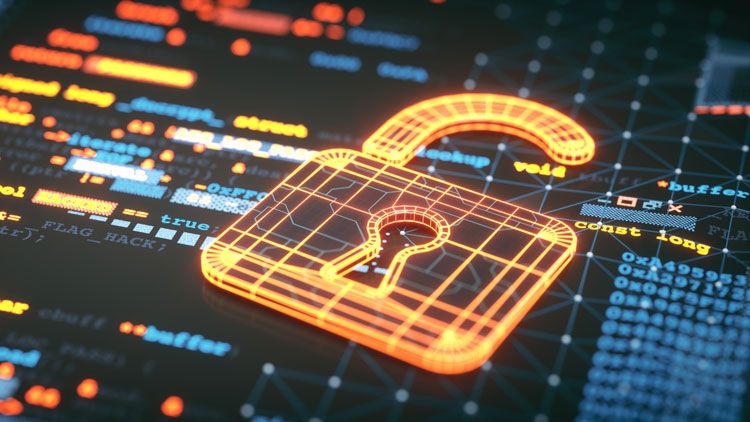Blog
Data Breaches Often Start with Insecure Authentication
In today’s modern and often hybrid workplace, there is no magic bullet for preventing data breaches—they can come from a variety of angles and thus require a vigilant, multifaceted approach. Implementing a wide-reaching collection of policies, practices, and tools is the best way to protect against data breaches and mitigate any damage that may come as a result.

Below, we’ll discuss four key aspects your organization should implement and maintain in the long term to help prevent a data breach from wreaking havoc on everything from your own internal processes to your customers and end users.
Two-Factor Authentication
Implementing stringent complexity protocols for user authentication not only entails using strong, unique passwords for all accounts; the use of two-factor authentication (2FA) should also be a minimum requirement.
| Two-factor authentication is a security process in which a user provides two different authentication factors to verify their identity, which helps prevent unauthorized access to the user’s accounts or systems. |
Several different types of authentication factors can be used in 2FA, including:
- Something you know: This can be a password, a PIN, or a security question.
- Something you have: This can be a physical device, such as a security token or a mobile phone, that is used to receive a one-time code.
- Something you are: This can be a biometric factor, such as a fingerprint or facial recognition.
In a typical 2FA process, the user is required to provide two of these factors to gain access. For example, a user might enter their password and then receive a one-time code via text message that they must enter to complete the login process. This helps ensure that even if someone else has the user’s password, they will not be able to access the account without the second factor.
Keep Software and Policies Updated
Outdated software and security protocols may contain vulnerabilities that can be exploited by hackers. Keeping software and security protocols up to date is an important, yet often overlooked, part of preventing data breaches.
For example, if you are using an outdated version of an operating system or other software, it may contain known vulnerabilities that have been fixed in more recent versions. Hackers can exploit these vulnerabilities to gain access to your systems or data. By keeping your software and security protocols up to date, you can help ensure that these vulnerabilities are patched and that your systems are protected against attacks.
| In addition to patching known vulnerabilities, keeping software and security protocols up to date can also help to protect against new threats that emerge. |
For example, new malware or ransomware strains may be developed that can target specific versions of software or operating systems. By keeping your systems up to date, you can help improve the level of protection against these new threats as well.
Cybersecurity and Data Breach Education for Employees
Cybersecurity education for employees is important because it helps to ensure that they are aware of the risks associated with using technology—and how to protect against them. It also contributes to a culture of security within an organization, which can help to prevent data breaches from occurring in the first place.
There are several ways in which cybersecurity education for employees can help to mitigate data breaches:
- It can help employees to identify and report suspicious activity: By educating employees about the signs of a potential data breach or cyberattack, you can empower them to identify and report any suspicious activity they come across. This can prevent an attack from progressing and potentially minimize the damage it causes.
- It can help employees to follow best practices: Cybersecurity education can help employees to understand the importance of following best practices, such as using strong and unique passwords, keeping software and security protocols up to date, and avoiding risky online behaviors. By following these best practices, employees can help reduce the risk of a data breach.
- It can help employees to understand the consequences of a data breach: By educating employees about the potential consequences of a data breach—e.g., financial loss, damage to the organization’s reputation, and legal liabilities—you can motivate them to take cybersecurity seriously and prioritize it in their work.
Use Encryption to Reduce the Risk of Exfiltrated Data
Encryption is a process used to protect data by converting it into a form that is unreadable to anyone without the necessary decryption key. It is an important tool for protecting sensitive data, as it helps ensure that even if an unauthorized party accesses the data, it will be unreadable and, therefore, unusable.
The most common types of encryption involve data as it is being transferred (in transit) and data that is stored (at rest). There are several ways in which the use of encryption, both in transit and at rest, that can help to mitigate data breaches.
When data is transmitted over networks — even private networks — it is vulnerable to interception by third parties. Encrypting data before it is transmitted can help to protect it from being accessed by unauthorized parties while it's in transit.
When data is stored, it is vulnerable to access by unauthorized parties who have access to internal resources. This can be through outside intrusion, a rogue employee, or even a mobile device left in a public place by accident. Encrypting sensitive data at rest can help to protect it from being accessed by unauthorized parties, even if the storage media is lost or stolen.
Cybersecurity Insurance: A Key Component of Data Breach Protection
A data breach can be very costly and result in a torrent of expenses, including the cost of notifying affected individuals, providing credit monitoring services, and hiring legal and public relations firms to help respond to the breach. These days, the expenses may even include a ransom amount to have an attacker delete the data they stole from your company.
Cybersecurity insurance can help cover these costs and provide financial support to an organization responding to a data breach. It can also provide access to expert resources that can help an organization minimize the impact of a breach and recover more quickly.
| It’s important to note that cybersecurity insurance is not a substitute for effective cybersecurity measures. Rather, it is meant to provide additional protection in case a data breach does occur. |
By implementing strong cybersecurity measures and having cybersecurity insurance in place, an organization can be better prepared to respond to a data breach and minimize its impact.
Author
Table of Contents












